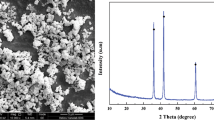Abstract
There is an increasing demand for materials with outstanding mechanical properties for many applications. Ultrafine-grained (UFG) materials as a path for improving the base materials and composite materials as a media for combining the superior properties of different materials are the current solutions for the demanded properties. Severe plastic deformation can be used for manufacturing UFG materials with nano-structure. In this research, accumulative roll bonding (ARB), as a severe plastic method, is utilized for manufacturing aluminum matrix composites reinforced with carbon nano-tubes (CNT). An experimental platform is used to investigate the mechanical properties of ARB-ed AA1200 nano-composites with 2, 6, 32, and 128 layers. Tensile deformation via the Lankford parameter is used to study the anisotropy of the samples. It is observed that this parameter is a function of the number of ARB cycles and increases significantly by increasing the ARB cycles. Moreover, the Hollomon analysis is used to investigate the strain-hardening behavior of the samples. The results showed that the strain-hardening exponent of ARB-ed AA1200 sheets reinforced with CNT decreases by increasing the number of ARB cycles. The formability of the ARB-ed AA1200 nano-composite samples is investigated analytically by the Marciniak–Kuczinsky model and experimentally using the Erichsen tests. The results revealed that the tensile properties are enhanced and more homogenous structures are obtained; however, formability is reduced. In order to obviate this issue, annealing the samples for 30 min at 250 °C was adapted. As a result, formability is improved at the cost of a slight reduction in strength. The obtained results can be due to recrystallization and grain growth alongside the dissolving of the brittle intermetallic oxides at the interface of the layers after annealing. Annealing is used as a mediator to reach a balance between strength, ductility, and formability, so an appropriate formability is achieved at the end.
Similar content being viewed by others
References
Morovvati MR, Lalehpour A, Esmaeilzare A (2016) Effect of nano/micro B4C and SiC particles on fracture properties of aluminum 7075 particulate composites under chevron-notch plane strain fracture toughness test. Mater Res Express 3(12)
Kaveripakkam Suban AA, Perumal M, Ayyanar A, Subbiah AV (2017) Microstructural analysis of B4C and SiC reinforced Al alloy metal matrix composite joints. Int J Adv Manuf Technol 70–017–0552-2
Iijima S, Brabec C, Maiti A, Bernholc J (1996) Structural flexibility of carbon nanotubes. J Chem Phys 104(5):2089–2092
Falvo MR, Clary GJ, Taylor RM et al (1997) Bending and buckling of carbon nanotubes under large strain. Nature 389:582–584
Kwon H, Park DH, Silvain JF, Kawasaki A (2010) Investigation of carbon nanotube reinforced aluminum matrix composite materials. Compos Sci Technol 70:546–550
Iijima S (1991) Helical microtubules of graphitic carbon. Nature 354:56–58
Treacy MMJ, Ebbesen TW, Gibson JM (1996) Exceptionally high Young’s modulus observed for individual carbon nanotubes. Nature 381:678–680
Ruoff RS, Lorents DC (1995) Mechanical and thermal properties of carbon nanotubes. Carbon 33(7):925–930
Takesue I, Haruyama J, Kobayashi N, Chiashi S, Maruyama S, Sugai T, Shinohara H (2006) Superconductivity in entirely end-bonded multiwalled carbon nanotubes. Phys Rev Lett 96:057001
Saito Y, Utsunomiya H, Tsuji N, Sakai T (1999) Ultra-fine grained bulk aluminum produced by accumulative roll-bonding (ARB) process. Acta Mater 47:79–583
Sun YF, Tsuji N, Fujii H, Li FS (2010) Cu/Zr nanoscaled multi-stacks fabricated by accumulative roll bondingJ. Alloys Compd 504:443–447
Iijima S, Brabec C, Maiti A, Bernholc J (1996) Structural flexibility of carbon nanotubes. J Chem Phys 104:2089
Lahiri D, Bakshi SR, Keshri AK, Liu Y, Agarwal A (2009) Dual strengthening mechanisms induced by carbon nanotubes in roll bonded aluminum composites. Mater Sci Eng A 523:263–270
Dariani BM, Azodi HD (2003) Finding the optimum Hill index in the determination of the forming limit diagram. B J Eng Manuf 217:1677–1683
Author information
Authors and Affiliations
Corresponding author
Rights and permissions
About this article
Cite this article
Morovvati, M.R., Mollaei-Dariani, B. The formability investigation of CNT-reinforced aluminum nano-composite sheets manufactured by accumulative roll bonding. Int J Adv Manuf Technol 95, 3523–3533 (2018). https://doi.org/10.1007/s00170-017-1205-1
Received:
Accepted:
Published:
Issue Date:
DOI: https://doi.org/10.1007/s00170-017-1205-1




